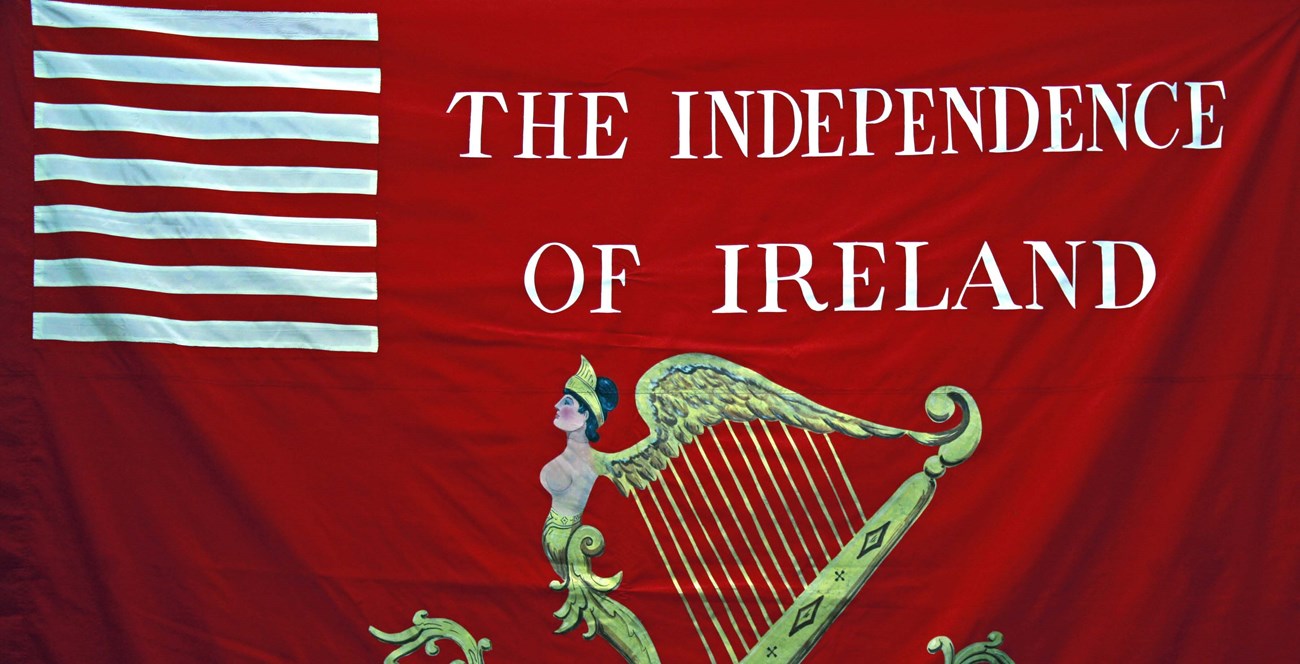
NPS
Life in CampThere were few diversions for Washington’s Army during the ‘Hard Winter’ of 1779— 1780. Most of the soldiers’ time was spent in guard duty, training, and camp chores. To break up the monotony of the winter camp and recognize political developments in Ireland, General Washington gave the soldiers a holiday on St. Patrick’s Day. This would be the only holiday the soldiers would get that winter; not even Christmas was celebrated.Why Celebrate St. Patrick’s Day?News had reached camp that told of political changes in Ireland. Some accounts said that there was a revolt in Ireland. Actually, the Irish Parliament had demanded the elimination of British trade restrictions. However, America hoped that the spirit of ‘rebellion would spread to Ireland. Secondly, a good portion of the American army was Irish. Irish officers included Washington’s aide, James McHenry, as well as, Generals Hand, Irvine, and Maxwell. Two Pennsylvania regiments were commanded by Irish born colonels and there were more Irish born soldiers in the Pennsylvania regiments than American born troops. Finally, after a winter of severe cold and snow accompanied by lack of food and pay, the army needed a holiday. There are few accounts of how the day was spent. A newspaper reported that the day was “... ushered in with music and hoisting of colors, exhibiting the 13 stripes, the favorite Harp, and an inscription declaring in capitals, THE INDEPENDENCE OF IRELAND.” Washington ordered all work parties to cease for the day. Officers of the New York regiments were ordered, “not to detail for duty any of the sons of St. Patrick.” The officers in Colonel Jackson’s regiment had a party featuring music and dancing. Colonel Johnston, commander of the Second Pennsylvania Brigade bought a hogshead of rum for his men though he expected them to “conduct themselves with the greatest sobriety and good order.” Washington may have been worried too. He ordered, “... the celebration of the day will not be attended with the least rioting or disorder.” Things must have gone well; there are no accounts of any major disturbances.St. Patrick's Day ParadeThe first St. Patrick’s Day parade took place not in Ireland but in the United States. Irish soldiers serving in the English military marched through New York City on March 17, 1762. Along with their music, the parade helped the soldiers reconnect with their Irish roots, as well as fellow Irishmen serving in the English army. Over the next 35 years, Irish patriotism among American immigrants flourished, prompting the rise of so-called ‘Irish Aid’ societies like the Friendly Sons of Saint Patrick and the Hibernian Society. Each group would hold annual parades featuring bagpipes and drums |
Last updated: August 6, 2022
